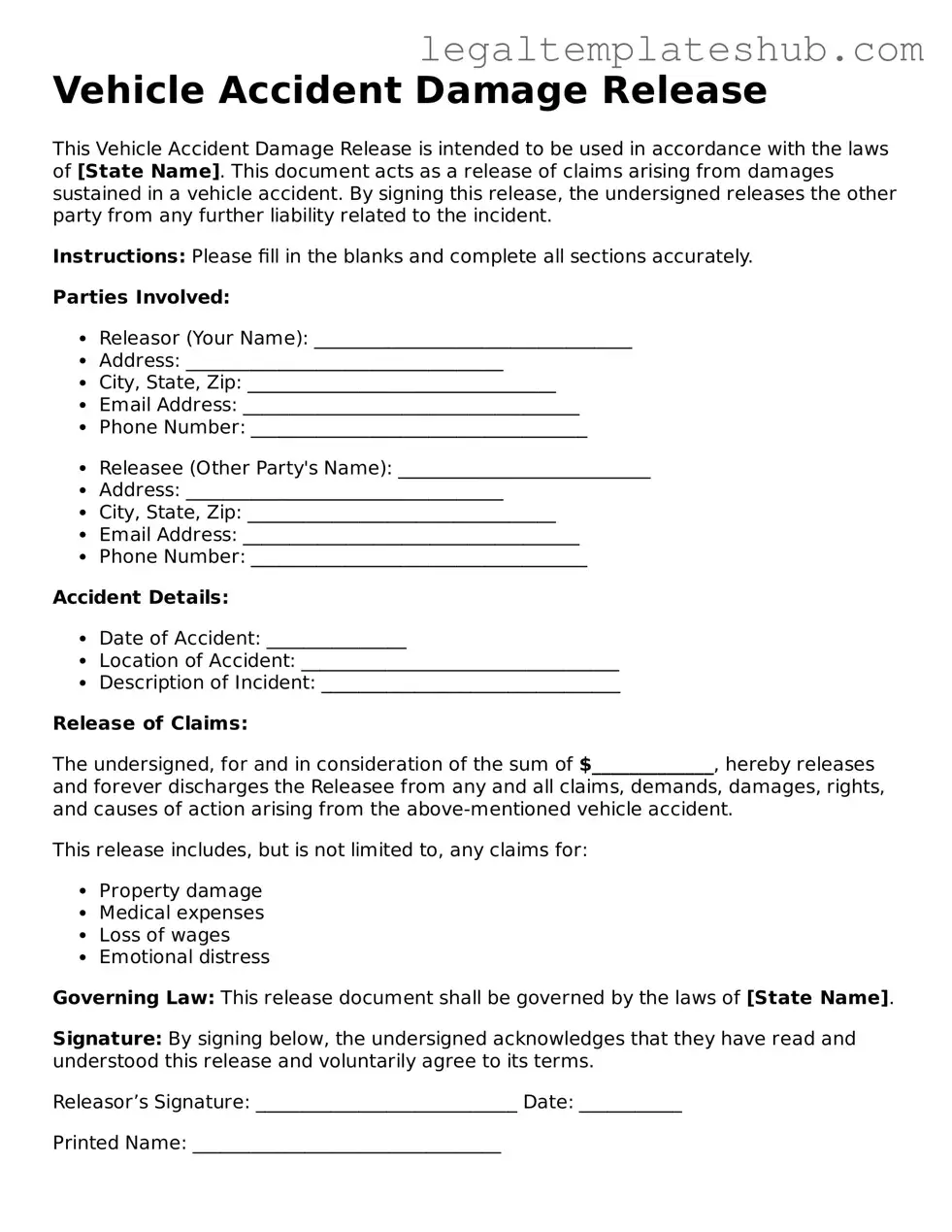Printable Vehicle Accident Damage Release Template
The Vehicle Accident Damage Release form is a legal document that allows individuals involved in a vehicle accident to settle claims related to property damage. By signing this form, parties agree to release each other from further liability, ensuring a smoother resolution process. If you're ready to take the next step, fill out the form by clicking the button below.
Access Editor
